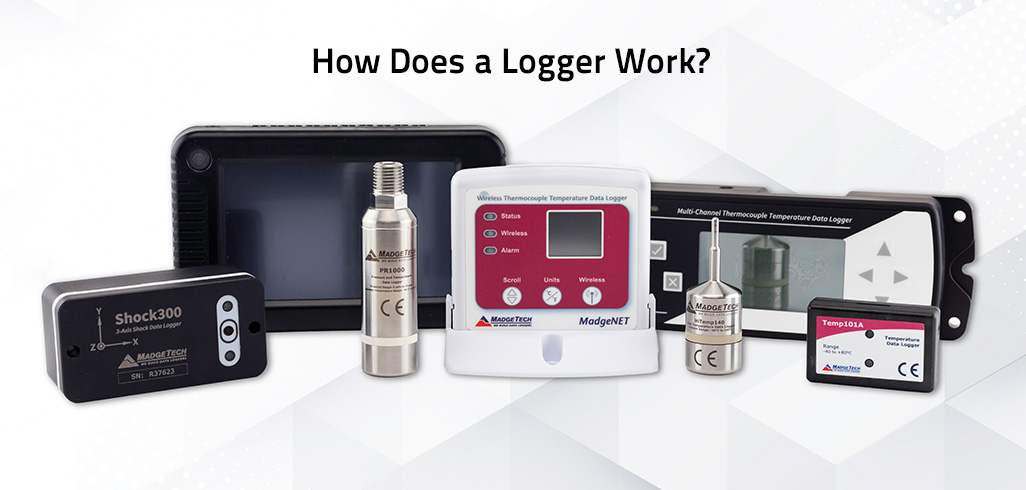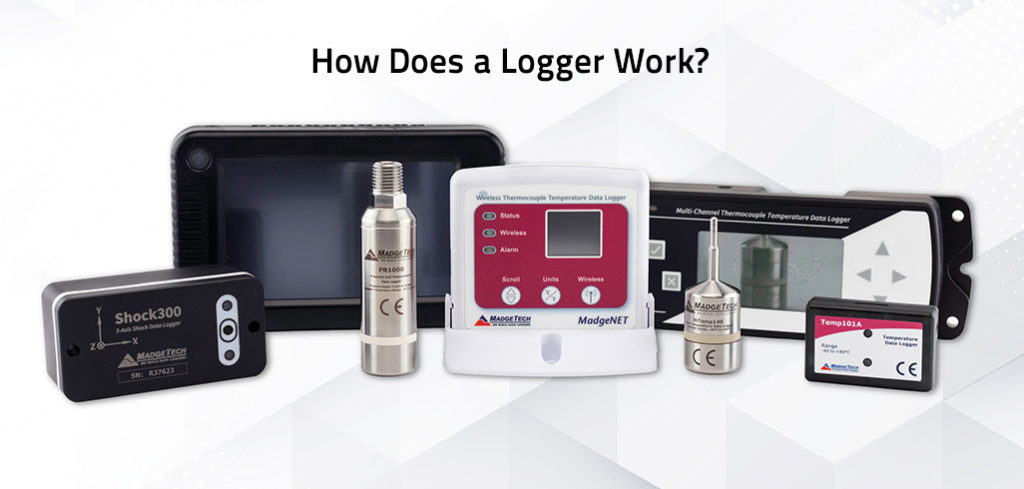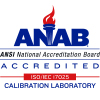 Posted on
Posted on

If you are a fan of MadgeTech’s blogs, you probably have seen our previous article “What is a Data Logger & How to Choose the Right One” and perhaps even our educational guide “An Introduction to Data Logging”. Both pieces of information are useful to help you decide if you need a data logger, what a data logger does, and how to choose one for your specific application.
In this article, we are going to break it down a little more for you. We are going to explain how a data logger works.
We already know that a data logger comes in many shapes and sizes, is a battery powered, electronic device that records environmental data over time via internal sensors or external sensors or probes. So, how does that piece of hardware work?
Most all data loggers have a software program that you use to tell the data logger how to work. At MadgeTech, our software is called MT4. You connect the data logger to the PC running the software with an interface. The software recognizes the data logger and allows you to program it.
You can name the data logger, program its reading intervals, it’s start method (now, delayed, real time) as well as stop method (specific time, number of readings).
Once the data logger is programmed, it is “armed” and waiting for its first scheduled reading. At the exact time, a microprocessor will get information from a sensor, and write that data into internal memory. The logger is again “armed” waiting for the next reading time. It will do this repeatedly until the logger is stopped.
When the data logger is connected back to the computer running the data logging software, the data can be offloaded, analyzed and reports can be generated.
To learn even more about data loggers and their capabilities, give us a call at (603) 456-2011 or email us at [email protected]






